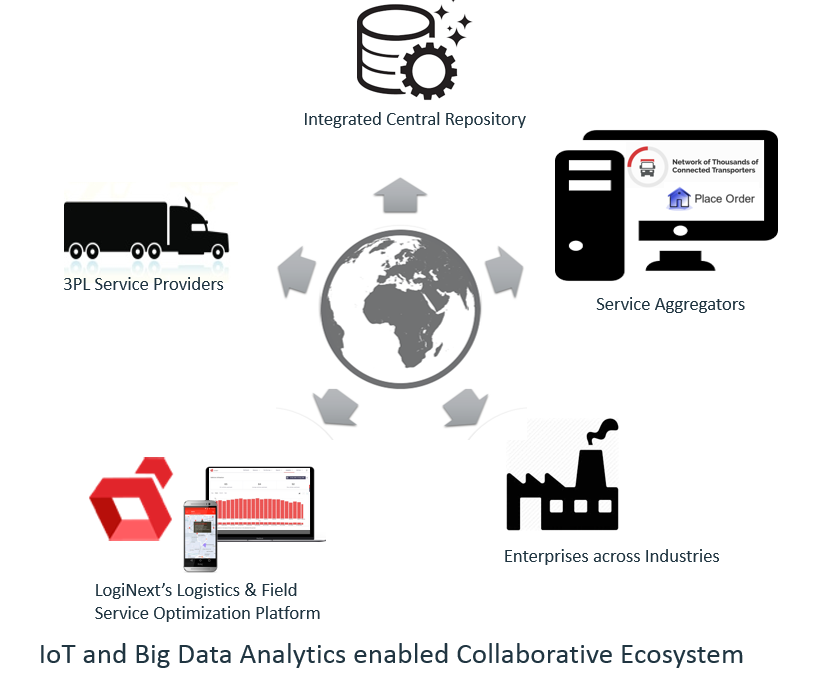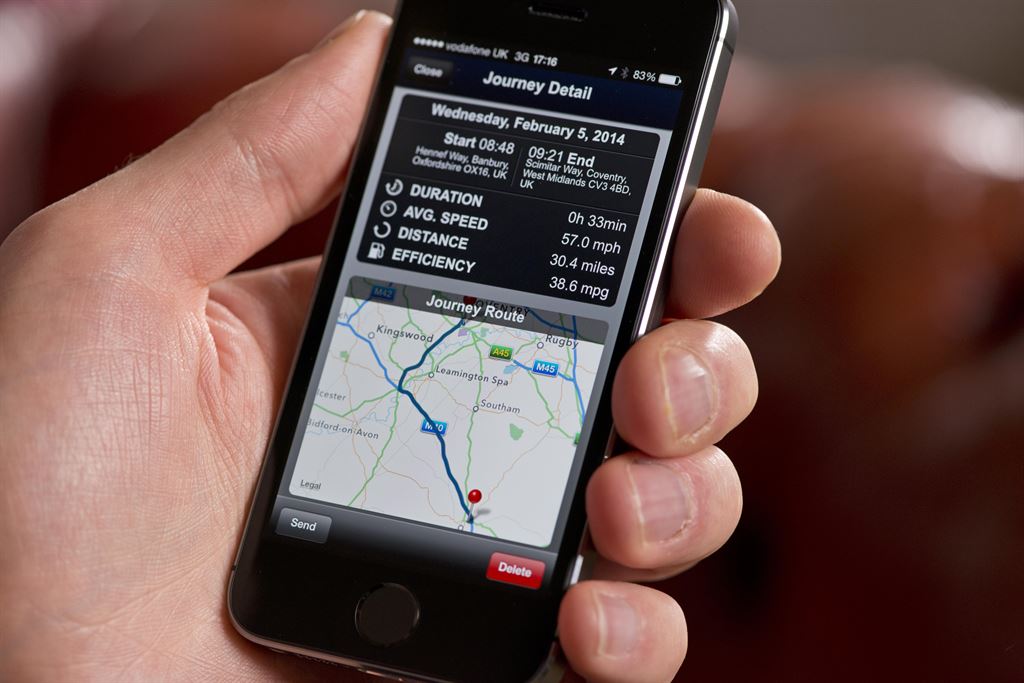How the Internet of Things & Route Optimization Could Eliminate Logistics Management Solutions Hassles
– Manish Porwal, Praveen Kumar & Sahil Malik
Do you also take a lot of time before finalizing a logistics management solutions provider? Do you wish to check the credibility of their performance, before taking the final call? Finally, do you wish timely and safe product distribution with real-time visibility at the least possible cost?
All these questions have troubled majority of logistics management solutions’ professionals and it is about time we try and address these questions with the help of Internet of Things, Data Analytics, and Machine Learning.
The United States has a vast road network of more than 4 million miles which supported logistics movement worth around 8% of the country’s GDP. The aim towards optimized logistics management solutions requires a strategic approach to a constantly evolving technology and IT infrastructure as its springboard. The unquenchable requirement from logistics management solutions is to have a system which has access to real-time and historical trends of all the data generated from logistics network, which is then used to reduce overall logistics management costs and bring out the best out of the services.
A Billion Dollar Question: How is this Possible?
‘Internet of Things’ to the Rescue: Imagine an ecosystem wherein we have access to movement history of every commercial vehicle’s & driver’s performance maintained in a central repository. This will include their performance ratings received from customers or hub managers, on-time delivery ratio, legal compliance, courier driving patterns & behavior analysis, and many other critical points which are expected from any good service provider.

Logistics Management Solutions with Data Capturing Network
Similarly, the transporters can evaluate their customers based on timely payouts, detention etc. and provide ratings to their customers or intermediate independent service providers. To make this happen, we require primarily 5 systems which would always be communicating with each other to make the captured data more accurate and precise over time.
These five systems would be:
- Central Repository of Vehicles & Drivers
- Service Aggregators
- 3PL Players
- Enterprises
- Location Analytics, Optimization & Visibility platform.
Key Advantages! How Will the Industry Benefit?
The biggest challenge any organization faces is ever increasing logistics management costs. Less optimized network not only affects the bottom-line of any organization but also impacts the environment with an average addition of 411 grams of carbon emission per mile traveled by the vehicle. To direct the logistics management solutions to reduce the cost of movement, we need to find out the mechanism to partner with the right players and get access to real-time data.

Real-Tracking and Mapping
Customers and vendors both need an access to real-time visibility of the movement of their vehicles with an accurate estimated time of arrivals. The drivers would need information on what route to be followed so that they are traveling ‘load balanced’ and on ‘distance optimized’ routes. Such efficiencies can be easily achieved by using products like LogiNext Mile and LogiNext Haul with proven efficiencies resulting in optimized operations.
Pre-Requisites: What are the Next Steps?
The basic parameter for the success of such integrated network is quality of data.
Let’s take the example of an electrical appliance manufacturer which must dispatch certain finished goods from one warehouse to another.
- They visit this portal, let’s call it an OFS (Optimized Freight Services); selects the service provider based on ratings and quotes received; and places an order.
- Now the transporter will log in on to the same portal; will accept certain orders, and view its journey plan.
- Route Optimization Engine will generate the most optimal path for the vehicle along with the size of the vehicle to be used. For example, LogiNext’s Patented Route Optimization Engine communicates in real time with multiple mapping interfaces and traffic information partners to generate accurate ETAs through effective route optimization.
- As soon as the trip is started customer and transporter will have access to real-time alerts with respect to the vehicle movement.
- It’s very important once the trip is ended there should be the feedback provided by the customer to the transporter and vice versa.
- This feedback can be influenced by the performance analysis received of that trip from location analytics platforms like LogiNext Mile.
Immediate Benefits of Effective Logistics Management Solutions
This could be one of the major step forward towards making our logistics management solutions ecosystem more agile and responsive. This will not only help customers to get better service providers but would also act as an enabler to service provider’s performance and would push them to put their best foot forward every time.
This will result in shorter lead times, improved turnaround times, faster delivery authentication, reduction in detention times, and improved vehicle utilization rates. Most important of all, the route optimization engine would enable the client to reduce carbon emissions via their evolving logistics management solutions system, and contribute to the betterment of the world we live in.
Cover Image Credit: Bsquare
259 3








After reading your blog post, I have a special offer for you, build your successful business with our company.
I appreciate everything you had to share about GPS tracking implementation of trackersbd companey. During the summer, I work as a manager for a summer sales team that works door to door and sells pest control. Our boss had me implement a GPS tracker for all of their tablets that they use and so we could keep a close eye on them. Just like you said, using GPS tracking has really increased their productivity because they know that we can watch them all the time. Thanks for the information!
Internet of Things has given rise to a very useful tech in the form of vehicle tracking. This will be helpful in so many ways. Drivers will now be aware all the times as you will be monitoring everything, will lead to better punctuality, better fuel usage, better maintenance of the vehicle also. This has taken off a lot of load from the fleet owners.